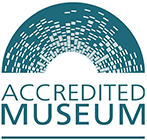Shandy Hall was built around 1430, the same date as St. Michael’s Church in Coxwold.
It was at that time called High Hall, as the hall is sited on high ground at the west end of the village. It was originally a timber-framed medieval long hall with a central hearth, one upstairs room (the solar) and a cross passage.
Many of the original features still exist, including rare wall-paintings in the ground-floor parlour and in the solar, which add to the architectural and historical significance of the Grade 1 listed building.
By 1760, when Laurence Sterne came to live in Coxwold as perpetual curate, Shandy Hall (by then the parsonage) had changed considerably. Further alterations were made by Sterne, including the building of a coach house, a cellar and a box-like two-storey brick extension.
Sterne had already published the first two volumes of The Life and Opinions of Tristram Shandy, Gentleman when he came to Coxwold and his friends celebrated his success as a writer by christening his new home ‘Shandy Hall’ the word Shandy being a dialect word for ‘wild, crazy, odd, merry.’
Sterne lived in the house until his death in 1768 and he wrote the subsequent seven volumes of Tristram Shandy and A Sentimental Journey through France and Italy in the study, a room which now contains the core of the museum’s collection.
In 1964 The Laurence Sterne Trust was created with the intention of purchasing Shandy Hall and to make it a museum. When the ownership was transferred in 1968 Herbert Read was the chairman of the Trust and Kenneth Monkman the first honorary curator.
Shandy Hall was opened to the public on 26 April 1973 by Frank Muir.
The Monkman family lived in the house until Kenneth’s death in 1998, when the curatorship was transferred to his widow. Patrick Wildgust was appointed resident curator on Julia Monkman’s retirement in 2004.








